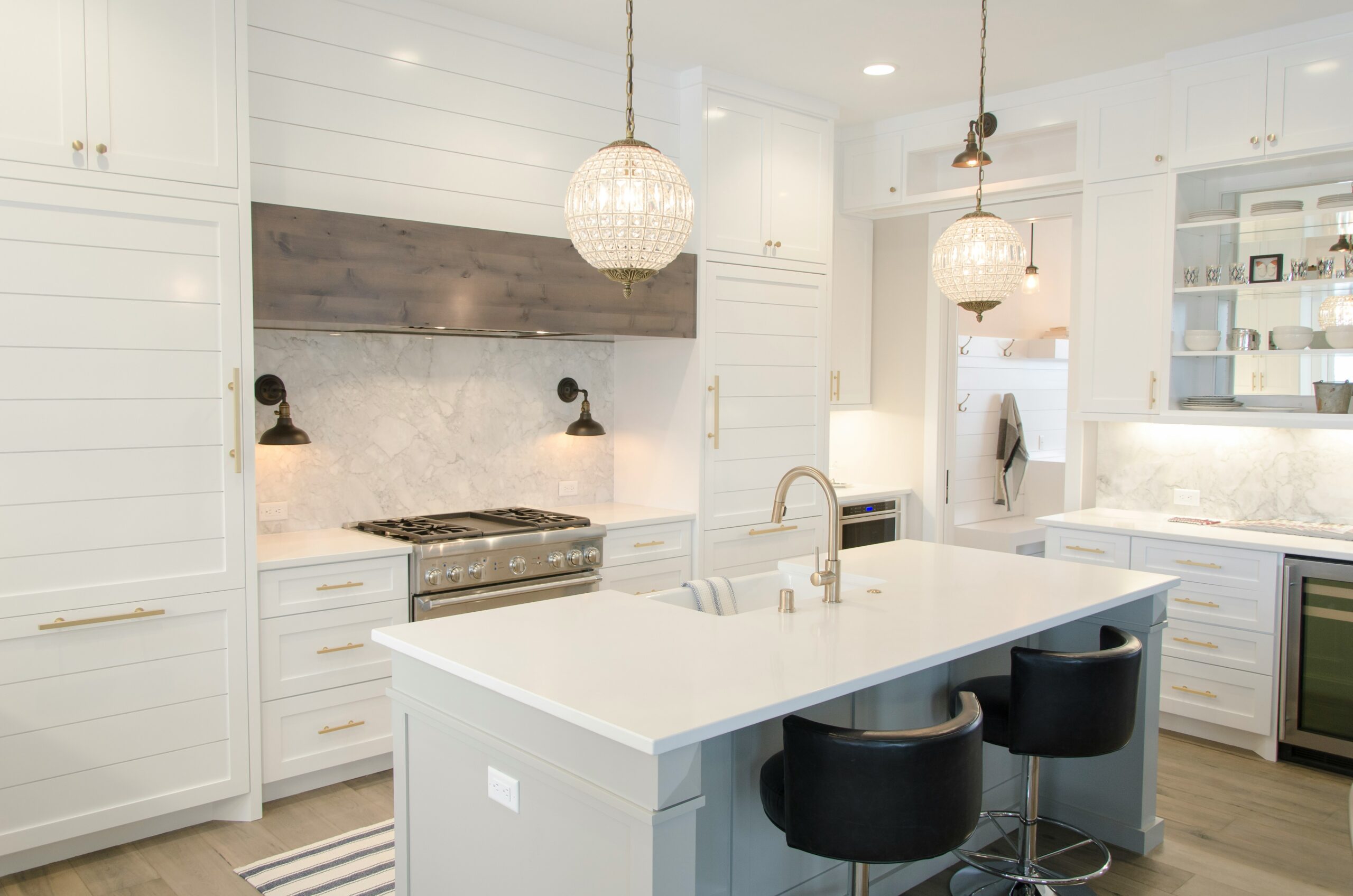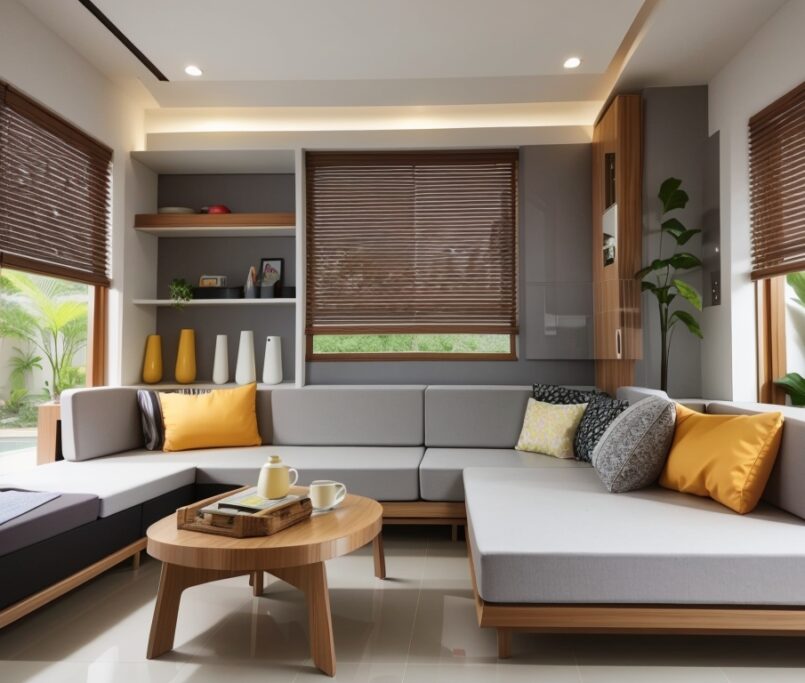Factors Affecting the Cost of a Kitchen Set
Understanding the Cost of a Kitchen Set per Meter
When it comes to renovating or designing a kitchen, one of the most common questions that homeowners have is about the cost of a kitchen set per meter. The price of a kitchen set can vary widely depending on various factors, including the materials used, the design complexity, and the location of the project. In this article, we will delve into the different aspects that influence the cost of a kitchen set per meter, helping you gain a better understanding of the pricing involved.
Factors Affecting the Price of a Kitchen Set
Several key elements contribute to the overall cost of a kitchen set per meter. Understanding these factors can provide clarity on why prices may differ from one project to another:
- Materials: The choice of materials significantly impacts the cost. High-end materials such as hardwood, granite, and stainless steel will naturally result in a higher price compared to more budget-friendly options like laminate and standard wood.
- Design Complexity: Intricate designs, customizations, and special features will add to the overall cost. A simple, straightforward design will generally be more affordable than a complex, customized one.
- Size of the Kitchen: The total area to be covered plays a crucial role. Larger kitchens will naturally require more materials, labor, and time, thereby increasing the overall cost.
- Hardware and Accessories: The type and quality of hardware, such as handles, knobs, and hinges, as well as additional accessories like pull-out shelves and lazy Susans, will impact the final price.
- Location and Labor Costs: The geographical location of the project can influence labor costs. Areas with a higher cost of living typically have higher labor rates, which will be reflected in the overall price.
Understanding the Pricing Structure
When inquiring about the cost of a kitchen set per meter, it’s essential to understand the pricing structure provided by suppliers or contractors. Typically, the pricing will encompass the following components:
- Material Costs: This includes the expenses for the actual materials used in the kitchen set, such as the cabinetry, countertops, and hardware.
- Labor Costs: The cost of the workforce involved in the fabrication, installation, and finishing of the kitchen set.
- Additional Services: Some suppliers may include additional services such as design consultations, project management, and post-installation support in their pricing.
- Contingency and Miscellaneous Costs: There may be additional charges to cover unforeseen circumstances, delivery fees, and other miscellaneous expenses.
It’s important to request a detailed breakdown of the costs to have a clear understanding of what is included in the quoted price. This transparency can help you make informed decisions and avoid unexpected expenses down the line.
Obtaining Accurate Quotations
When seeking quotations for a kitchen set per meter, it’s advisable to obtain multiple quotes from different suppliers or contractors. This allows for a comprehensive comparison of prices, services offered, and the quality of materials. Keep in mind that the cheapest option may not always be the best choice, as the quality of materials and workmanship should also be taken into consideration.
Furthermore, be specific about your requirements and provide detailed information about the kitchen space, preferred materials, and any specific design elements you desire. This will enable the suppliers to provide more accurate quotations tailored to your needs.
Conclusion
The cost of a kitchen set per meter can vary significantly based on a multitude of factors. By understanding the elements that influence pricing, familiarizing yourself with the pricing structure, and obtaining detailed quotations, you can make well-informed decisions when embarking on your kitchen renovation or design project. Remember that quality and durability are paramount, and while price is important, it should be balanced with the overall value and longevity of the investment.
Budgeting for Your Kitchen Set Investment
Determining the budget for your kitchen set is a crucial step in the renovation or design process. The total cost per meter can vary significantly, so it’s essential to plan and allocate your financial resources accordingly. Start by assessing your overall home improvement budget and determine how much you can comfortably allocate towards the kitchen set.
When budgeting, consider not only the initial cost of the kitchen set but also any additional expenses that may arise, such as installation, electrical work, and potential structural changes. It’s wise to set aside a contingency fund to cover any unexpected costs that may surface during the project.
Remember, the quality of materials and craftsmanship can have a direct impact on the longevity and functionality of your kitchen set. While it may be tempting to opt for the most affordable option, investing in a higher-quality kitchen set can provide long-term value and a better return on your investment.
Comparing Quotes and Negotiating Prices
As mentioned earlier, obtaining multiple quotes from different suppliers or contractors is crucial in determining the most suitable kitchen set for your budget. When comparing these quotes, pay close attention to the details provided, such as the specific materials, labor costs, and any additional services included.
Don’t be afraid to negotiate the prices with the suppliers. Many companies are willing to offer discounts or additional services to secure a sale. Be respectful and transparent in your negotiations, and be prepared to provide evidence of lower quotes from competitors. Emphasize the value you are seeking in terms of quality, durability, and customer service, as these factors can sometimes justify a slightly higher price.
Additionally, consider the timing of your project. Certain times of the year, such as the off-season, may be more favorable for negotiating better prices with suppliers. They may be more willing to offer discounts or promotions to maintain a steady flow of business during slower periods.
Maximizing Space and Functionality
When designing your kitchen set, it’s essential to focus not only on the aesthetics but also on the overall functionality and efficient use of space. The layout and design of your kitchen can greatly impact the overall cost per meter, as well as the long-term usability and satisfaction with your investment.
Work closely with your supplier or a professional kitchen designer to optimize the layout and make the most of your available space. Consider incorporating features such as:
- Efficient storage solutions: Utilize every nook and cranny with customized drawers, pull-out shelves, and clever cabinet organization systems.
- Ergonomic workspaces: Ensure that the countertops, sinks, and appliances are positioned at comfortable heights and within easy reach.
- Integrated appliances: Seamlessly integrate your kitchen appliances, such as ovens, cooktops, and dishwashers, to create a cohesive and streamlined look.
- Lighting and ventilation: Incorporate adequate lighting and efficient ventilation systems to enhance the functionality and ambiance of your kitchen.
By focusing on maximizing space and functionality, you can create a kitchen that not only looks beautiful but also promotes efficient workflow and a pleasant cooking experience. This holistic approach can ultimately lead to a more cost-effective and satisfying investment in your kitchen set.
Maintenance and Longevity Considerations
Investing in a high-quality kitchen set is not just about the initial cost per meter, but also about the long-term maintenance and longevity of the installation. Proper care and maintenance can significantly extend the lifespan of your kitchen set, ensuring that you get the most value out of your investment.
When selecting materials, consider their durability and ease of maintenance. For example, hardwood cabinetry may require more frequent refinishing compared to laminate or solid surface countertops, which are generally easier to clean and maintain. Additionally, pay attention to the quality of hardware, such as hinges and drawer slides, as these components can greatly impact the long-term performance of your kitchen set.
It’s also important to establish a regular maintenance routine to keep your kitchen set in top condition. This may include:
- Cleaning and wiping down surfaces to prevent stains and buildup
- Lubricating hinges and moving parts to ensure smooth operation
- Addressing any minor repairs or adjustments promptly to prevent larger issues
- Consulting with professionals for periodic deep cleaning or refinishing, if necessary
By prioritizing maintenance and longevity, you can maximize the value of your kitchen set investment and enjoy a functional and aesthetically pleasing kitchen for years to come.
Investing in Professional Installation
While it may be tempting to attempt a DIY kitchen set installation to save on costs, it’s generally advisable to invest in professional installation services. Experienced installers possess the necessary skills, tools, and expertise to ensure a proper and seamless installation, ultimately contributing to the long-term performance and durability of your kitchen set.
Professional installers are familiar with the intricacies of kitchen design and can identify and address any potential issues or challenges that may arise during the installation process. They can also provide valuable insights and recommendations to optimize the layout and functionality of your kitchen, ensuring that the final result meets your expectations.
When selecting an installation provider, consider the following factors:
- Reputation and experience: Look for a company or individual with a proven track record of successful kitchen set installations.
- Licensing and certifications: Ensure that the installer is properly licensed and certified to perform the work in your area.
- Warranty and guarantee: Inquire about the warranties or guarantees offered on the installation services, which can provide additional peace of mind.
- Communication and professionalism: Choose an installer who is responsive, communicative, and demonstrates a commitment to customer satisfaction.
While the cost of professional installation may be higher than a DIY approach, the benefits of a seamless, high-quality installation can far outweigh the additional expense. Investing in professional services can help ensure the longevity and optimal performance of your kitchen set, making it a worthwhile consideration in your overall budget.
Exploring Financing Options
For many homeowners, the cost of a kitchen set per meter can be a significant financial investment. If the upfront cost is a concern, there are various financing options available that can help make the project more accessible and manageable.
Some common financing options for kitchen set purchases include:
- Home Equity Loans or Lines of Credit: These allow you to borrow against the equity in your home, often at lower interest rates than personal loans or credit cards.
- Personal Loans: Many banks, credit unions, and online lenders offer personal loans that can be used for home improvement projects, including kitchen renovations.
- Retail Financing: Some kitchen set suppliers or contractors may offer their own financing programs, often with promotional interest rates or deferred payment options.
- Credit Cards: While not the most ideal option due to higher interest rates, credit cards can provide a means of financing a kitchen set purchase, especially for smaller projects.
When exploring financing options, be sure to consider the interest rates, repayment terms, and any associated fees or costs. It’s also important to carefully assess your ability to make the required monthly payments and ensure that the financing aligns with your overall financial goals and budget.
Consult with your preferred kitchen set supplier or a financial advisor to discuss the various financing options available and determine the most suitable choice for your specific needs and circumstances.
Conclusion: Investing Wisely in Your Kitchen Set
Determining the cost of a kitchen set per meter is a complex process that involves considering a multitude of factors. From the choice of materials and design complexity to the location and labor costs, each element plays a crucial role in the overall pricing structure.
By understanding these factors and taking a strategic approach to budgeting, comparing quotes, and maximizing space and functionality, you can make an informed decision and invest wisely in your kitchen set. Remember to also prioritize maintenance and longevity, as well as the benefits of professional installation, to ensure that your kitchen set provides long-term value and satisfaction.
Ultimately, the cost of a kitchen set per meter should be viewed as an investment in the heart of your home. By carefully navigating the various considerations and exploring financing options, you can create a kitchen that not only meets your aesthetic and functional needs but also enhances the overall value of your property.




